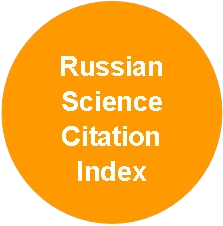On the Potential of Pine Sap Processing in the Places of Its Extraction
DOI:
https://doi.org/10.37482/0536-1036-2019-1-96–105Keywords:
pine sap production, tapping, rosin, turpentine, technologyAbstract
The industrial production of pine sap almost completely passed away in the Russian Federation. In order to regain lost ground it is necessary to resolve the following issues: creation of production capacities for pine sap processing in the places of its extraction; involvement of forest areas, rented for other types of forest exploitation, to pine sap production; creation of logistic schemes for sales of pine sap and products of its processing. The research is focused on development of a technology for pine sap processing, which could be used on production basis of an economic entity. As a result of analysis, the key features of the technological cycle of pine sap processing are revealed, that was accounted in the developing technology. The experiments were done on test equipment. Technological process consisted of pine sap decontamination and processing. The obtained rosin and turpentine met the existing standards for their quality. Two heating surfaces and a refrigeration unit were used in the technological workflow. One of the surfaces fulfilled the function of a smelter. The second surface (rosin boiling) and refrigeration unit were used in order to obtain rosin and turpentine. The important aspects of the developed technology are temperature modes and applied methods for purification from organic and mineral impurities. It has been established that with the use of an industrial plant having a rosin boiling part area of
2 m2, it is possible to recycle 35 t of pine sap for 6 months, i.e. for the tapping season. Manufacturing of such industrial equipment is not very difficult. Its dimensional specifications are quite acceptable for the capabilities of small enterprises.
Downloads
References
Гордон Л.В., Фефилов В.В., Скворцов С.О., Атаманчуков Г.Д. Технология лесохимических производств: учеб. для техникумов. М.: Гослесбумиздат, 1960. 419 с.
ГОСТ 1571–82. Скипидар живичный. Технические условия. М.: Изд-во стандартов, 1990. 22 с.
ГОСТ 19113–84. Канифоль сосновая. Технические условия. М.: Стандартинформ. Изд-во стандартов, 1990. 13 с.
ГОСТ Р 15.301–2016. Система разработки и постановки продукции на производство. Продукция производственно-технического назначения. Порядок разработки и постановки продукции на производство. М.: Стандартинформ, 2016. 12 с.
Игнатович М.В. Импортозамещение как фактор экономической безопасности государства // Новая наука. Стратегии и векторы развития. 2016. № 11. С. 204–206.
Комшилов Н.Ф. Канифоль, ее состав и строение смоляных кислот. М.: Лесн. пром-сть, 1965. 163 с.
Лукьянов П.М. История химических промыслов и химической промышленности России до конца XIX века. Т. 3. М.: АН СССР, 1951. 606 с.
Пастухова Н.О. Изучение зарубежного опыта подсочки и возможность его использования в Архангельской области // Молочнохозяйств. вестн. 2016. № 3(23). С. 16–21.
Разработать технологию переработки живицы сосновой на местах ее добычи и обосновать применение данной технологии на предприятиях Архангельской области: отчет о НИР. Архангельск: СевНИИЛХ, 2000. 30 с.
Ярунов А.С., Горкин А.И., Петрик В.В. Прижизненное пользование лесом на Севере // Наука – лесному хозяйству Севера: сб. / СевНИИЛХ. Архангельск: Пресс, А, 1999. С. 126–129.
Demulle D. Rosin and the Art of the Squish. CreateSpace, 2016. 32 p. [In Eng.]
Jones H.L. Process of Rosin Sizing Paper. International Paper Company. New York. U.S. Pat. 3,421,976. 1969.












